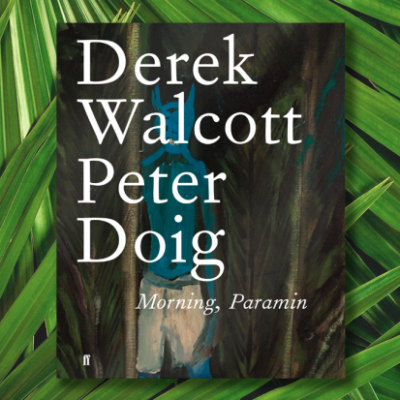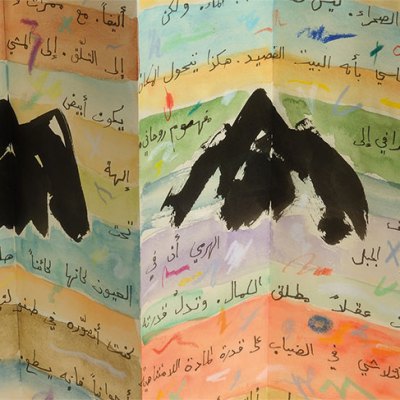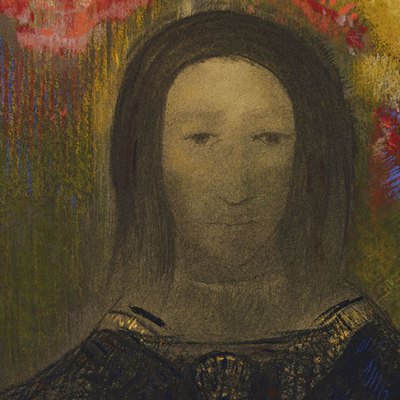Nobody wants to take a coffee-table book to the beach, so here’s some fiction about art, picked by Apollo’s editors.
 An Artist of the Floating World (1986), Kazuo Ishiguro
An Artist of the Floating World (1986), Kazuo Ishiguro
In this meditation on memory and subjectivity, set in post-war Japan, elderly artist Masuji Ono reflects on his past. The title of the book is an English translation of Ukiyo-e, the genre of Japanese art, which Ono himself once practised before becoming a propaganda artist for the government.
The Blazing World (2014), Siri Hustvedt
Told from the perspective of painter Harriet Burden, Hustvedt’s sixth novel takes aim at the misogyny of the New York art world at the end of the 20th century. Gaining little critical recognition for her art, Burden is better known as a wife and mother, yet Hustvedt’s portrait of Burden suggests a much more creative and formidable figure whose artistic life is frustrated by the sexism of the art world.
Cat’s Eye (1988), Margaret Atwood
The protagonist in Atwood’s seventh novel is Elaine Risley, a successful painter returning to her hometown of Toronto for a retrospective of her work. Risley, who is uncomfortable with her work being assimilated by the emerging feminist art movement, has been interpreted by some readers as a stand-in for Atwood herself – another creative figure who has proclaimed her discomfort with the label of ‘feminist’ being attached to her art.
Crude (2016), Sally O’Reilly
In a land called Academia, the words and actions of critics are reported in tabloid newspapers like those of reality TV celebrities. After making some misjudged comments on radio and ruining her public reputation, the novel’s heroine, Ida, an art critic (like O’Reilly herself), learns a lot about power, the structures of cultural production, and the links between art and oil. But O’Reilly’s satire very much has its eyes on the art world.
 Dance to the Music of Time (1951–75), Anthony Powell
Dance to the Music of Time (1951–75), Anthony Powell
Powell’s 12-novel sequence is of course named after Poussin’s painting in the Wallace Collection, and the whole of Dance is absolutely riddled with art. From deft asides about real works to lengthy descriptions of fictional ones, Powell sets up our responses to people and places by referring to painting.
The Flamethrowers (2013), Rachel Kushner
The narrator of Kushner’s novel is an artist in her early twenties nicknamed Reno, who we first meet racing a Moto Valera motorcycle across the salt flats of Nevada. Hoping to break the land speed record, Reno’s trip is also about photographing the marks her bike makes as it careens across the landscape. Mixing the real with the invented, Kushner takes us on a thrilling ride into the downtown art scene of 1970s New York.
How to be Both (2014), Ali Smith
Renaissance frescoes feature alongside ‘frieze after frieze of carnal pleasure’ spied on an iPhone screen in this time-hopping novel. Smith intertwines the tale of a Cambridge teenager mourning the death of her mother with the history of Italian painter Francesco del Cossa to remind us that ‘love and painting both are works of aim and skill’.
 Lanark: A Life in Four Books (1981), Alasdair Gray
Lanark: A Life in Four Books (1981), Alasdair Gray
Gray’s postmodern epic flits between the dystopian land of Unthank, beset by perennial twilight, to a realist Kunstler roman set in pre-war Glasgow. Duncan Thaw’s doomed mural for the local kirk is a classic depiction of vaulting artistic ambition come a cropper.
Old Masters (1985), Thomas Bernhard
Atzbacher, an elderly music critic, sits for hours every other day in the Bordone Room at the Kunsthistorisches Museum in Vienna – which is where Reger, the narrator, meets him. By turns poignant and absurd, their nomadic conversation is the stuff of the novel, and covers everything from Austrian society to art historians (‘the real wreckers of art’).
Picture This (1988), Joseph Heller
In 1653, Rembrandt is painting Aristotle Contemplating the Bust of Homer in Amsterdam. As the work progresses, the figure in the painting starts to become conscious (when an eye is completed, he can see…and so on). The painter thinks about the death of his wife and his mounting debts, Aristotle thinks about philosophy and the Peloponnesian War, and Heller makes us think about the connections between ancient Greece and the Dutch Golden Age – and 20th-century America.
 Ripley Under Ground (1970), Patricia Highsmith
Ripley Under Ground (1970), Patricia Highsmith
In the second Ripley thriller, Tom Ripley’s art forgery business – turning over fresh-to-market works by the painter Philip Derwatt, who killed himself years before – nearly leads him to come unstuck. Perfect summer reading for any art dealer looking for creative ways to see off meddlesome collectors…
The Sparsholt Affair (2017), Alan Hollinghurst
Alan Hollinghurst’s most recent novel – a multi-generational narrative that opens in Oxford during the Second World War – is good on the flip-flop between desire and drudgery that so often goes into making art. How does the artist’s intimacy with, or disinterest in, their subject shape the creation of a portrait?
Vermilion Sands (1970), J.G. Ballard
In these playful short stories set in an artists’ colony, orchids sing, statues emit sound, machines generate lines of poetry, clouds can be sculpted, and psychotropic houses absorb the personalities of their owners. It’s the closest Ballard gets to optimism.
10.04 (2014) Ben Lerner
If you’ve ever felt like punting a Jeff Koons Balloon Dog around a gallery with no consequences, this novel might be as close as you’ll get. ‘It was wonderful to see an icon of art world commercialism and valorised stupidity shattered,’ the unnamed narrator declares as he visits the Institute for Totalled Art, which re-appropriates once-valuable artworks that have been written off by their insurers.


